Starting a coffee cart business can be an exciting journey, but success depends on making smart choices from the start. One of the biggest decisions you’ll face is selecting the right cart. With so many options out there, it’s easy to feel overwhelmed. Here, we’ll walk through what you need to consider to ensure you find the perfect cart for your vision.
Table of contents
- Define Your Business Needs First
- Evaluate the Cart’s Size, Type, and Design
- Look for Quality Materials
- Research the Seller’s Reputation
- Think About Customization Options
- Budgeting and Financing
- Licensing and Permits
- Equipment and Accessories
- Health and Safety Considerations
- Choosing the Right Location
- Sourcing Coffee and Supplies
- Marketing and Branding
- Staffing and Training
- Seasonal and Event Opportunities
- Real-World Insights
- Resources to Explore Further
- Wrapping it up
1. Define Your Business Needs First
Before shopping around, get clear on what you want to offer and where you’ll operate. This foundation will shape every other choice you make. Ask yourself:
- What will you sell? Are you focusing solely on coffee, or will you offer pastries, smoothies, or other drinks? Your answer will determine equipment and layout needs.
- Where will you set up? Different environments, like farmers’ markets, office parks, or festivals, require different setups. For outdoor use, prioritize carts with weather-resistant materials.
- Who is your customer? Families in parks, commuters on the go, or festival crowds all have different needs. Match your cart to their expectations.
You might find it helpful to create a business plan or at least a simple outline of your goals and daily workflow. This will help you stay focused and avoid buying something that doesn’t fit.
2. Evaluate Size, Type, and Design
Once you know your needs, it’s time to consider the right size and style for your cart.
- Size: Make sure the cart has enough room for your supplies and equipment without being too bulky to move around.
- Type: Decide whether you need a fully mobile cart or a more permanent kiosk. Mobile carts work well for street vending, while kiosks are better for consistent indoor locations.
- Design: Your cart’s look matters. Clean lines, well-chosen colors, and clear branding help attract customers.
Many reputable cart makers, including Cart-King International, offer 3D renderings or visual mockups. These let you see the cart’s layout and make adjustments before you commit.
3. Look for Quality Materials
Your cart is a long-term investment, so choose materials that can stand up to daily use.
- Frame: Stainless steel or powder-coated aluminum frames are strong and resist rust.
- Countertops: Stainless steel and food-safe laminate are easy to clean and durable.
- Wheels: Quality wheels with locking brakes are essential for mobility and stability.
For tips on maintaining stainless steel carts, check out this simple cleaning guide from The Spruce.
4. Research the Seller’s Reputation
The right cart seller can make or break your experience. Here’s how to vet them:
- Years in business: Longstanding vendors have experience and a track record.
- Reviews and testimonials: Look for reviews on independent sites like Trustpilot or the Better Business Bureau.
- References: Don’t hesitate to ask for them. Talking with other coffee cart owners can give you real-world feedback.
- Post-sale support: Ask if the seller offers repair services, customization, or ongoing help.
At Cart-King, we pride ourselves on our positive reputation and track record of helping clients succeed in their ventures.
5. Think About Customization Options
No two coffee carts are alike, and customization can make your cart truly yours.
- Branding: Add your logo, signature colors, or custom signage to help customers remember you.
- Functional features: Do you need extra storage for snacks? A built-in espresso machine? Eco-friendly features like compost bins? Work with your cart maker to build what you need.
A custom cart can set you apart from other vendors and make operations smoother.
6. Budgeting and Financing
Your coffee cart itself is a significant cost, but it’s just part of the total investment. Here’s a closer look at other key expenses and how to cover them:
- Permits and Licenses: Depending on your city or county, you may need multiple permits, such as health department certifications, a general business license, and possibly a fire inspection. These can cost anywhere from $100 to several hundred dollars each.
- Initial Inventory and Supplies: Start with enough coffee beans, milk or milk alternatives, cups, lids, stirrers, napkins, and condiments to cover your first few weeks. Don’t forget cleaning supplies and storage containers.
- Point-of-Sale Systems: A reliable POS system (like Square or Toast) helps you process sales, track inventory, and accept mobile payments. Many offer monthly subscriptions in addition to hardware costs.
- Marketing and Promotion: Budget for professional signage, branded merchandise (like t-shirts or stickers), and online marketing (social media ads, website setup).
- Emergency Fund: Set aside a small cushion for unexpected costs like equipment repairs, staff coverage, or price increases in your supplies.
Financing Options:
Starting a coffee cart can cost anywhere from $10,000 to $30,000+, depending on your setup. Here are some ways to secure funding:
- Small Business Loans: Programs like the SBA 7(a) Loan or local microloans can provide low-interest capital. Be prepared with a clear business plan and financial projections.
- Crowdfunding: Platforms like Kickstarter or GoFundMe can rally community support. Highlight your mission and share updates to keep backers engaged.
7. Licenses and Permits
Operating a coffee cart without the right paperwork can lead to fines or even closure. Here’s a deeper look into what you’ll likely need:
- Local Health Permits: These cover food safety and sanitation standards. Inspections typically ensure you have a handwashing station, safe food handling practices, and compliant equipment.
- Business License: Most cities require a general business license to operate legally. This ensures your tax obligations are in order and your operation is registered.
- Parking or Vending Permits: Many cities regulate where you can set up your cart. Permits might specify certain areas, times of day, or require a fee to operate in public spaces.
- Fire Inspections: If your cart has any heating elements (like a propane-powered espresso machine), the local fire department may require an inspection to ensure it’s safe.
- Additional Permits for Events: If you plan to operate at festivals, markets, or special events, you may need a temporary event permit. These are usually separate from your ongoing licenses.
Each city or county has its own rules. Visit your local health department and city hall websites for official guidelines. Or, consult a local small business development center for help navigating the red tape.
8. Equipment and Accessories
Beyond the cart itself, having the right equipment is essential for smooth operations and consistent quality. Here’s what to consider:
- Espresso Machine and Grinder: These are your workhorses. Choose reliable commercial-grade models that can handle your expected daily volume. Consistent temperature and pressure are crucial for pulling great shots.
- Water Filtration System: Coffee is mostly water. A filtration system improves taste and prolongs the life of your equipment by reducing mineral buildup.
- Handwashing Sink: Many health departments require a sink with hot and cold running water on your cart. A self-contained sink unit can meet this requirement.
- Cash Drawer and Secure Payment Systems: Offer multiple payment options to cater to customer preferences, such as cash, credit cards, and mobile payments.
- Menu Boards or Digital Signage: Keep your offerings clear and visible. A chalkboard menu adds charm, while digital screens let you update specials easily.
Other handy accessories include milk frothers, extra storage for cups and lids, and cup sleeves for hot drinks. The right tools can elevate your workflow and help you serve quickly during busy periods.
9. Health and Safety Considerations
Cleanliness isn’t just a preference, it’s the law. Here’s what you need to keep in mind:
- Food Safety Practices: Learn how to handle milk, syrups, and other perishables. The FDA’s FSMA guide offers a solid foundation for safe practices.
- Employee Hygiene: Frequent handwashing, clean uniforms, and hair restraints help maintain a sanitary environment.
- Safe Storage for Dairy or Alternatives: Keep milk, oat milk, and other dairy alternatives at proper temperatures to prevent spoilage and protect your customers’ health.
Regular cleaning of your equipment and surfaces is also critical. Even small lapses can lead to fines or health violations.
10. Choosing the Right Location
Location can make or break your coffee cart. Here’s what to weigh:
- High-Traffic Areas vs. Niche Spots: Busy intersections, transit stations, and office districts offer steady foot traffic. On the other hand, niche locations, like a local farmer’s market or community park, might suit your unique vibe and help you stand out.
- Indoor vs. Outdoor: Indoor spaces offer year-round stability and protection from the elements, while outdoor spots can be lucrative during good weather. Consider how your cart’s design handles sun, wind, and rain.
- Local Events and Festivals: These can give you a boost in exposure and quick sales, but be sure to factor in event fees and permit requirements.
If you’re unsure, try testing different locations before signing any long-term agreements.
11. Sourcing Coffee and Supplies
Great coffee starts with great beans. Here’s how to choose wisely:
- Local Roasters: Partnering with local coffee roasters ensures freshness and can set you apart from generic suppliers.
- Direct Trade and Fair-Trade Options: These can appeal to ethically-minded customers who want to know their coffee supports fair wages and sustainable practices.
- Sustainable Packaging: Biodegradable cups, compostable lids, and minimal plastic usage can align with your brand and reduce environmental impact.
A.D. Bos Vending Services is one example of a wholesaler offering products that focus on fair trade, sustainability and industry best practices.
12. Marketing and Branding
You don’t need a massive marketing budget to build a strong brand. Here’s how to get started:
- Consistent Branding: Match your cart’s look with your online presence. Consider the consistency of your logos, color schemes, and tone of voice.
- Local SEO: Listing your cart on Google Maps and business directories helps nearby customers find you quickly.
- Social Media: Show your cart in action. Post photos of artistic lattes, your smiling staff, or the fun vibes of your pop-up events. Authentic posts are more engaging than polished ads.
For more ideas, see our guide on Social Media Marketing Tips.
13. Staffing and Training
Even if you’re starting out solo, you’ll probably need extra hands as you grow:
- Barista Skills: Train staff on pulling consistent espresso shots, steaming milk, and maintaining equipment.
- Customer Service: Friendly, attentive service is crucial for building loyalty. Encourage staff to greet customers warmly and keep the line moving.
- Team Culture: Create a work environment that values cleanliness, communication, and a shared commitment to quality.
Hiring and training might seem like a headache, but investing in good people pays off with smoother operations and happier customers.
14. Seasonal and Event Opportunities
One advantage of a mobile cart? Flexibility. Here’s how to use it:
- Summer Events: Outdoor concerts, festivals, and farmers markets draw big crowds looking for cold brews and iced drinks.
- Winter Warm-Up: In cooler months, highlight hot coffee, lattes, and seasonal treats like gingerbread or peppermint drinks.
- Corporate Events: Offices and conferences often want convenient coffee service for staff or attendees.
Tailor your offerings and schedule to make the most of each opportunity. It’s a great way to expand your customer base beyond your regular spot.
15. Real-World Insights
Nothing beats advice from those who’ve done it before. Connect with other coffee cart owners and you can learn:
- What worked and what didn’t: Maybe they found a perfect location or learned that certain drinks don’t sell as well as expected.
- Tips for Setup and Operations: Little details, like where to store milk or how to handle peak times, can make a big difference.
- Vendor and Supplier Recommendations: First-hand referrals can help you avoid unreliable suppliers and find trusted partners.
For example, Ampersand Coffee expanded to Dallas Fort Worth International Airport using Modular Coffee Carts from Cart-King International and a matching robot barista. They tailored their cart’s design to fit the airport’s busy environment, choosing practical materials and a layout that supports quick service. The setup lets them offer their well-loved lattes and iced coffees to travelers in a high-traffic location while staying true to their brand’s welcoming atmosphere.
16. Resources to Explore Further
Want to dive deeper? These resources can help:
- National Coffee Association: Coffee Trends & Data
- Coffee Shop Startup Guide (Small Business Administration)
- Reddit's Coffee Community
- Cart-King’s Cart and Kiosk Articles – More tips and real-world advice
17. Wrapping it up
Choosing the right coffee cart is a key step in building a thriving business. Start by understanding your unique needs, then find a cart that fits your vision and work style. Take your time, ask questions, and don’t be afraid to customize your setup to stand out.
If you’re curious about getting started or refining your plan, explore our coffee carts for sale or reach out for advice. With the right cart and a clear plan, you’ll be well on your way to creating a successful coffee cart business.
Get your sales rolling with Cart-King; your partner in mobile business success.

-
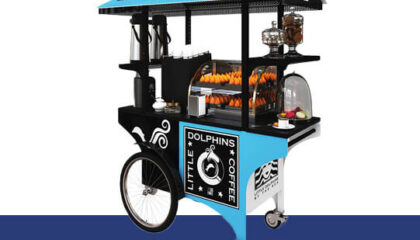 Read more +
September 13, 2024 By kingmike in Cart and Kiosk Articles
Read more +
September 13, 2024 By kingmike in Cart and Kiosk Articles
Simple Guide to Our Top Street Food Carts
-
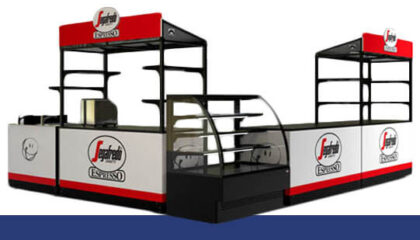 Read more +
June 3, 2024 By kingmike in Cart and Kiosk Articles
Read more +
June 3, 2024 By kingmike in Cart and Kiosk Articles
Buying a food cart in the US – What you need to know
-
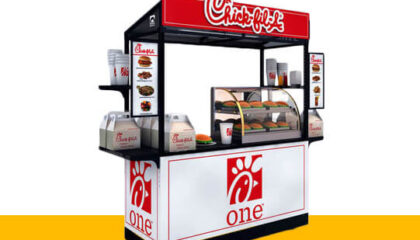 Read more +
May 8, 2024 By Cart King in Cart and Kiosk Articles
Read more +
May 8, 2024 By Cart King in Cart and Kiosk Articles
Food Cart Menu Ideas
-
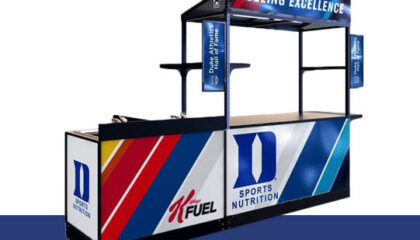 Read more +
May 3, 2024 By Cart King in Cart and Kiosk Articles
Read more +
May 3, 2024 By Cart King in Cart and Kiosk Articles
How to Start a Food Cart Business
-
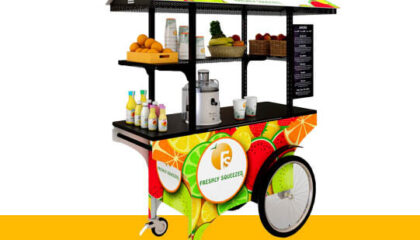 Read more +
April 24, 2024 By Cart King in Cart and Kiosk Articles
Read more +
April 24, 2024 By Cart King in Cart and Kiosk Articles
How to Increase Food Cart Sales: A Complete Guide
-
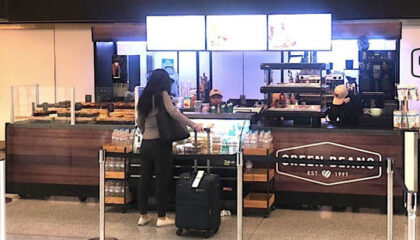 Read more +
April 9, 2024 By Cart King in Cart and Kiosk Articles
Read more +
April 9, 2024 By Cart King in Cart and Kiosk Articles
Food Cart Business Locations
-
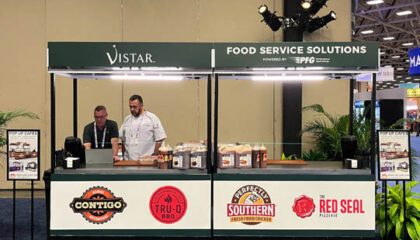 Read more +
By Cart King in Cart and Kiosk Articles
Read more +
By Cart King in Cart and Kiosk Articles
Tips for Designing your Trade Show Kiosk
-
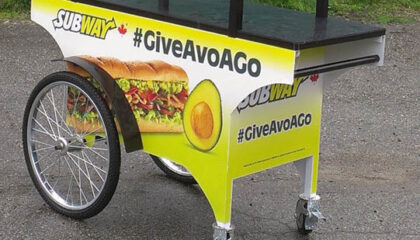 Read more +
April 8, 2024 By Cart King in Cart and Kiosk Articles
Read more +
April 8, 2024 By Cart King in Cart and Kiosk Articles
Social Media Marketing for Your Food Cart Business
-
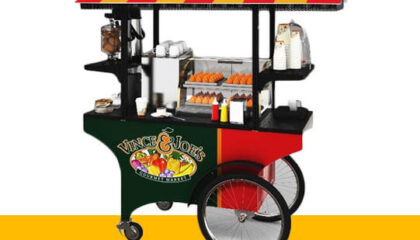 Read more +
April 6, 2024 By Cart King in Cart and Kiosk Articles
Read more +
April 6, 2024 By Cart King in Cart and Kiosk Articles
Push Carts: Some Ideas on Location
-
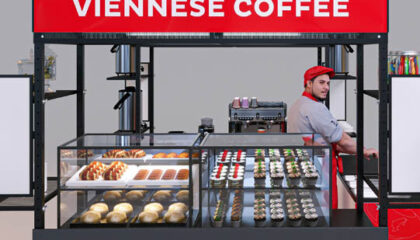 Read more +
April 2, 2024 By Cart King in Cart and Kiosk Articles
Read more +
April 2, 2024 By Cart King in Cart and Kiosk Articles
Mastering the Art of Criticism as a Coffee Cart Vendor
